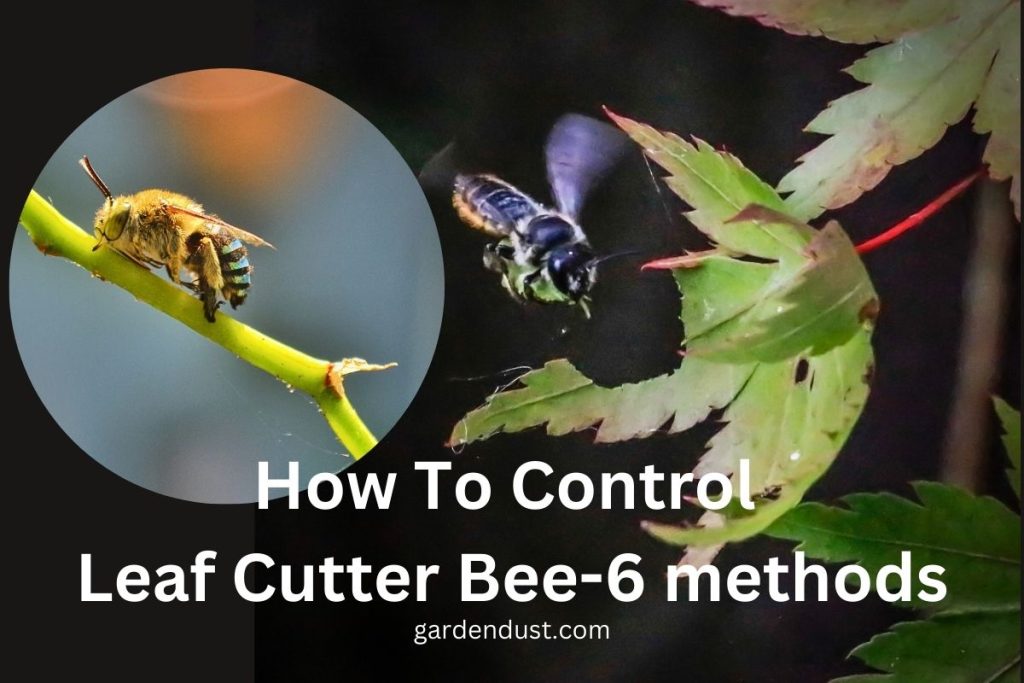Leaf cutter bees, belonging to the Megachilidae family, are essential pollinators in many ecosystems. While these bees play a crucial role in the pollination of various plants, their presence can become problematic for certain crops and ornamental plants. Leaf cutter bees are known for cutting circular or oval pieces from leaves, which they use to construct nests for their larvae. If their population becomes excessive, it can lead to aesthetic damage and reduced yields in agricultural settings. This comprehensive guide will delve into effective strategies for controlling leaf cutter bees without harming the overall health of your garden or crops. Let’s start…
How To Control Leaf Cutter Bee
Before diving into control measures, it’s important to understand the behavior and biology of leaf cutter bees. These solitary bees are non-aggressive and generally do not pose a threat to humans. They are named for their distinct behavior of cutting leaf fragments, which they use to line their nests. Leaf cutter bees are particularly attracted to certain plants, such as roses, canna lilies, and bougainvillea. Recognizing the signs of leaf cutter bee activity is crucial for implementing targeted control methods.
How to Identify Leaf Cutter Bee Nests

Leaf cutter bee nests are typically found in pre-existing cavities, such as hollow plant stems or beetle exit holes in wood. Female leaf cutter bees construct individual cells within these nests using cut leaf fragments and line them with glandular secretions. Identifying these nests is the first step in understanding the extent of the leaf cutter bee population in your area.
6 Methods To Control Leaf Cutter Bees –
1. Provide Alternative Nesting Sites
To control leaf cutter bees, consider providing alternative nesting sites to divert their attention from your prized plants. Installing bee houses or nesting blocks with appropriately sized holes can encourage leaf cutter bees to establish their nests in designated areas, away from crops or ornamental plants.
READ ALSO:-How to Get Rid of Common Buckthorn
2. Remove Attractive Plants
If leaf cutter bees are causing significant damage to specific plants, consider temporarily removing or relocating these plants to minimize their attraction to the bees. This can help protect valuable crops or ornamental vegetation while still allowing leaf cutter bees to contribute to pollination in other areas.
3. Apply Physical Barriers
Using physical barriers is an effective method to prevent leaf cutter bees from reaching certain plants. Row covers, mesh netting, or floating row covers can be employed to create a barrier between the bees and vulnerable vegetation. Ensure that the barriers are properly secured to prevent bees from gaining access.
4. Introduce Natural Predators
Encouraging the presence of natural predators can help control leaf cutter bee populations. Parasitoid wasps, such as Chrysididae and Ichneumonidae, are known to attack leaf cutter bee larvae and can be attracted to the area by providing suitable habitat conditions.
5. Optimize Irrigation Practices
Leaf cutter bees are attracted to well-irrigated plants, as the moisture content enhances the flexibility of leaves for nesting. Adjusting irrigation practices to keep plants on the drier side may discourage leaf cutter bees from choosing them for nest construction.
6. Implement Chemical-Free Repellents
Chemical-free repellents can be an environmentally friendly way to deter leaf cutter bees. Substances like neem oil, garlic spray, or hot pepper wax can be applied to plants as natural repellents. These solutions do not harm the bees but make the leaves less attractive for nesting.
Controlling leaf cutter bees requires a balanced approach that minimizes damage to crops or ornamental plants while respecting the vital role these pollinators play in ecosystems. By identifying nests, providing alternative nesting sites, employing physical barriers, introducing natural predators, optimizing irrigation practices, and using chemical-free repellents, you can effectively manage leaf cutter bee populations without resorting to harmful pesticides. It’s essential to strike a balance that ensures the health of your garden or crops while promoting biodiversity and sustainability in the long run. Happy Gardening….






